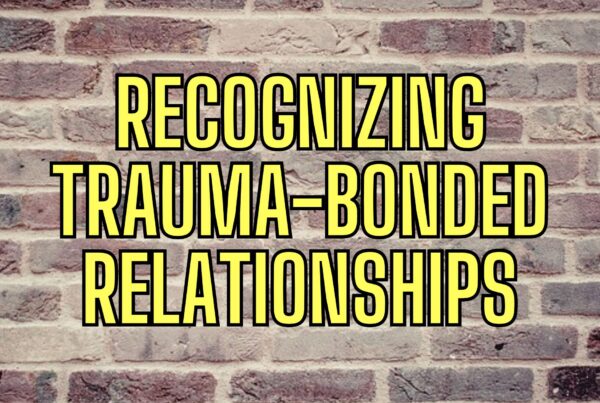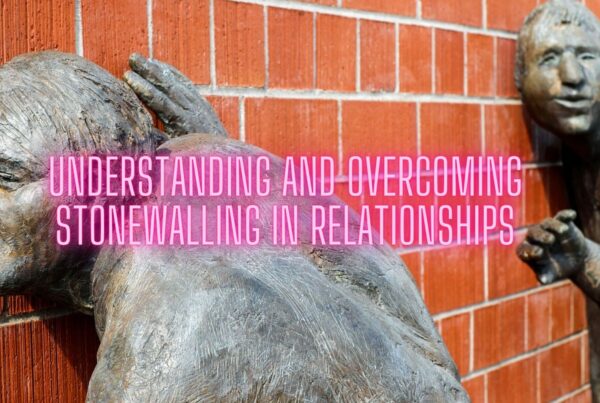Understanding Gaslighting: Unmasking Manipulation and Regaining Control
What is Gaslighting? The Web of Manipulation Unveiled
Gaslighting is a psychological manipulation tactic used by individuals to gain power and control over others. It involves the deliberate distortion of someone’s perception of reality, leading them to doubt their own thoughts, emotions, and memories. After reading this blog, understanding gaslighting and seeing it in action will become more obvious to you.
The term “gaslighting” originates from a play titled “Gaslight” by Patrick Hamilton, in which a husband manipulates his wife’s perception of reality by dimming the gas lights in their home and then denying any changes when she questions him.
Gaslighting Creates Susceptibility to Manipulation
This insidious technique is often employed in personal relationships, such as romantic partnerships, familial connections, or even in the workplace. The gaslighter gradually undermines the victim’s self-confidence, making them more dependent and susceptible to manipulation. It is crucial to recognize the signs of gaslighting in order to protect ourselves and reclaim our autonomy.
The Signs of Gaslighting
Gaslighting can take various forms and involves specific statements and behaviors that aim to confuse, disorient, and erode the victim’s sense of self. While the tactics employed can vary, here are some common examples of what a gaslighter might say:
- Denial of Reality: Gaslighters may flat-out deny events, conversations, or situations that the victim clearly remembers. They may say things like, “You’re imagining things” or “That never happened.” By systematically dismissing the victim’s experiences, the gaslighter creates doubt and erodes their trust in their own perception of reality.
- Diminishing Feelings and Emotions: Gaslighters undermine the validity of the victim’s emotions, making them feel overly sensitive or irrational. They might say, “You’re overreacting” or “You’re too sensitive.” This diminishes the victim’s self-esteem and ability to trust their own emotional responses, causing them to question their own emotional well-being.
- Twisting the Truth: Gaslighters manipulate facts and twist them to suit their own narrative. They might say things like, “You’re just making assumptions” or “You’re taking it out of context.” By distorting the truth, gaslighters sow seeds of confusion and create a sense of uncertainty in the victim’s mind.
- Blaming and Shifting Responsibility: Gaslighters deflect blame onto the victim and refuse to take responsibility for their own actions. They might say, “It’s all your fault” or “You made me do it.” This tactic aims to make the victim feel guilty and responsible for the gaslighter’s behavior, further eroding their self-confidence and sense of agency.
- Creating Doubt and Confusion: Gaslighters constantly contradict themselves or provide inconsistent information, leaving the victim unsure of what is true or real. They might say, “You must be remembering it wrong” or “I never said that.” This tactic plays with the victim’s memory and cognitive processes, leading to self-doubt and confusion.
Understanding Gaslights Impact on Mental Health
Gaslighting can have severe emotional and psychological effects on the victim. It can lead to anxiety, depression, low self-esteem, and a diminished sense of self-worth. Recognizing the signs of gaslighting is the first step toward breaking free from its grip and regaining control over one’s own reality.
Responding to Gaslighting: Empowering Yourself and Finding Support
When faced with gaslighting, it is essential to prioritize your mental well-being and take steps to regain control over your own reality. Here are some strategies that can help:
- Recognize the Manipulation: Educate yourself about gaslighting and its tactics. By understanding how gaslighters operate, you can better identify and protect yourself from their manipulation. Knowledge is power, and awareness of the techniques employed by gaslighters can help you see through their deception.
- Trust Your Intuition: Develop trust in your own perceptions, thoughts, and feelings. Remember that your experiences are valid, and you have the right to trust yourself. Gaslighters often try to make you doubt your own instincts, but by tuning in to your intuition, you can reclaim your inner compass.
- Maintain Boundaries: Set clear boundaries with the gaslighter and assertively communicate your limits. It is crucial to establish and protect your personal space. Make it clear that you will not tolerate their manipulative tactics and that you expect to be treated with respect.
- Seek Support: Reach out to trusted friends, family members, or professionals who can provide validation and guidance. Therapists, counselors, or support groups can offer valuable assistance in navigating the effects of gaslighting. Having a strong support network can help you gain perspective, validate your experiences, and provide the emotional support needed to heal.
- Practice Self-Care and Mindfulness: Engage in activities that promote self-care and self-compassion. Gaslighting can take a toll on your mental and emotional well-being, so it is crucial to prioritize self-care. Engage in activities that bring you joy, practice relaxation techniques, and prioritize your physical and emotional health. Mindfulness techniques, such as deep breathing exercises and grounding practices, can help you stay present and centered.
Understanding Gaslighting Recovery Takes Time
Remember, recovering from gaslighting takes time and effort. It is important to be patient with yourself as you heal from the emotional impact. By reclaiming your truth and surrounding yourself with supportive individuals, you can rebuild your self-confidence and regain control over your life.
Understanding Gaslighting
Gaslighting is a manipulative tactic that can severely impact a person’s well-being and sense of reality. By recognizing the signs, understanding the techniques employed, and taking proactive steps to protect oneself, individuals can break free from the grasp of gaslighting and rebuild their lives with strength and resilience.
Release Hypnosis Melbourne Hypnotherapy
Since 2015, Lawrence Akers has been working under the name Release Hypnosis offering Hypnotherapy and ACT based work to the people of Melbourne or an online service. Based on St Kilda Rd, Release Hypnosis is an easy and convenient location to get to and accessible by the ANZAC station train and tram stop. Release Hypnosis can help with a wide range of presenting issues, and I offer a free 30 minute no obligation discovery call for those who are unsure if hypnotherapy is the right way forward for them.
Book Your FREE 30 Minute Consultation With Release Hypnosis NOW!
You may also like to read:
Discovering Purpose and Values: A Path to Mental Well-being
Can’t Visualise in Hypnosis? Here’s What You Can Do Instead.
Dealing with Financial Stress and Crisis: Finding Peace Amid Turbulence
What Is The Success Rate of Hypnosis?
Release Hypnosis Melbourne Hypnotherapy is accessible for people in: Abbotsford, Armadale, Albert Park, Balwyn, Bentleigh, Black Rock, Box Hill, Brighton, Brunswick, Bulleen, Bundoora, Camberwell, Canterbury, Carnegie, Caulfield, Chadstone, Cheltenham, Clayton, Coburg, Collingwood, Deer Park, Doncaster, Elsternwick, Eltham, Elwood, Epping, Essendon, Fairfield, Fitzroy, Footscray, Glen Iris, Glen Waverley, Glenhuntly, Greensborough, Hampton, Hawthorn, Heidelberg, Highet, Ivanhoe, Kew, Kooyong, Lalor, Laverton, Lower, Plenty, Macleod, Malvern, Middle Park, Moonee Ponds, Melbourne, Moorabbin, Mount Waverley, Murrumbeena, Northcote, Oakleigh, Ormond, Parkville, Pascoe Vale, Port Melbourne, Prahran, Preston, Richmond, Rosana, Sandringham, South Yarra, South Melbourne, Spotswood, St Albans, St Kilda, Surrey Hills, Templestowe, Thornbury, Toorak, Tullamarine, Williamstown, Yarraville, North Melbourne, Windsor, East Melbourne, Melbourne, Melbourne CBD, Melbourne 3004








